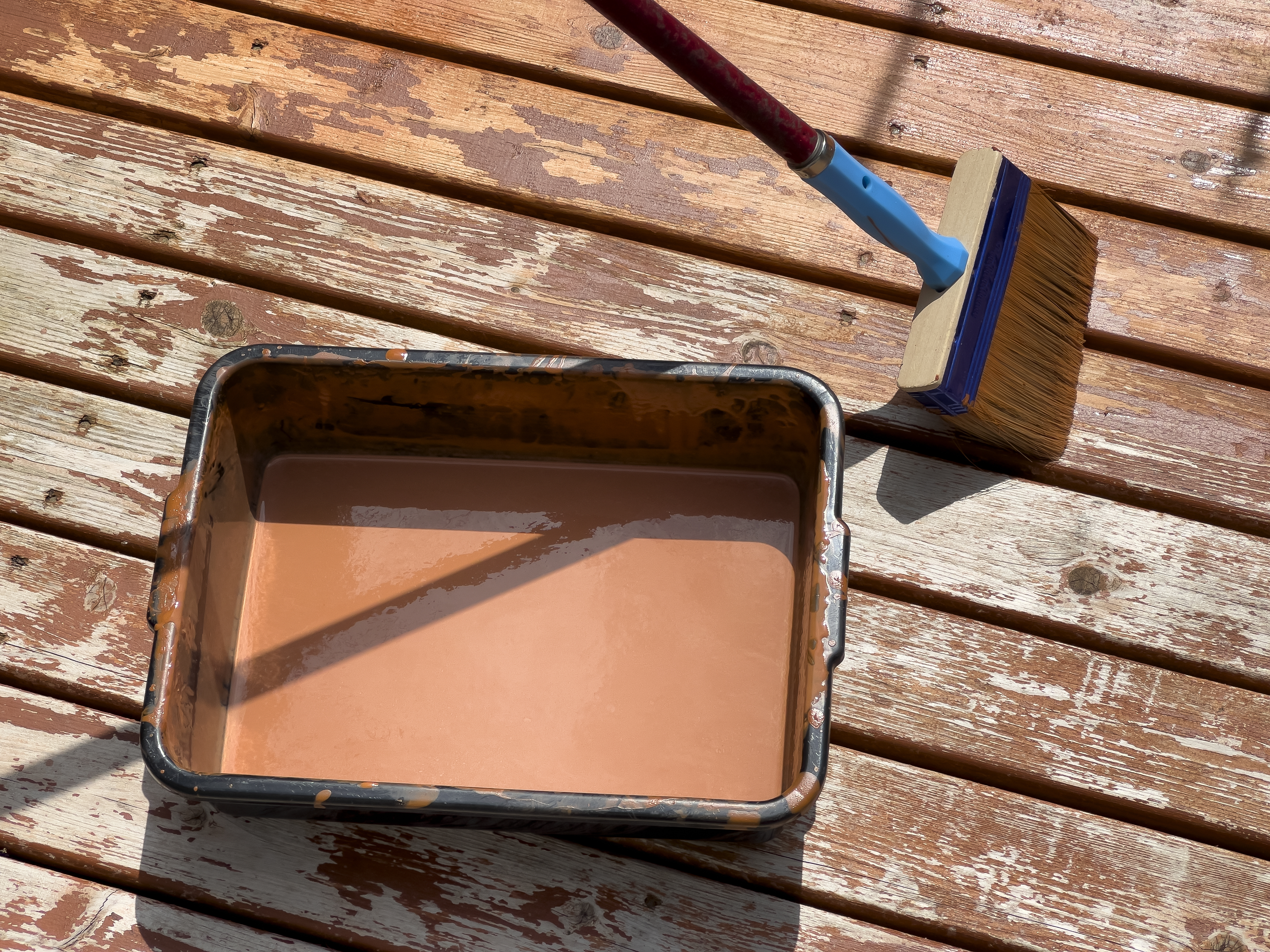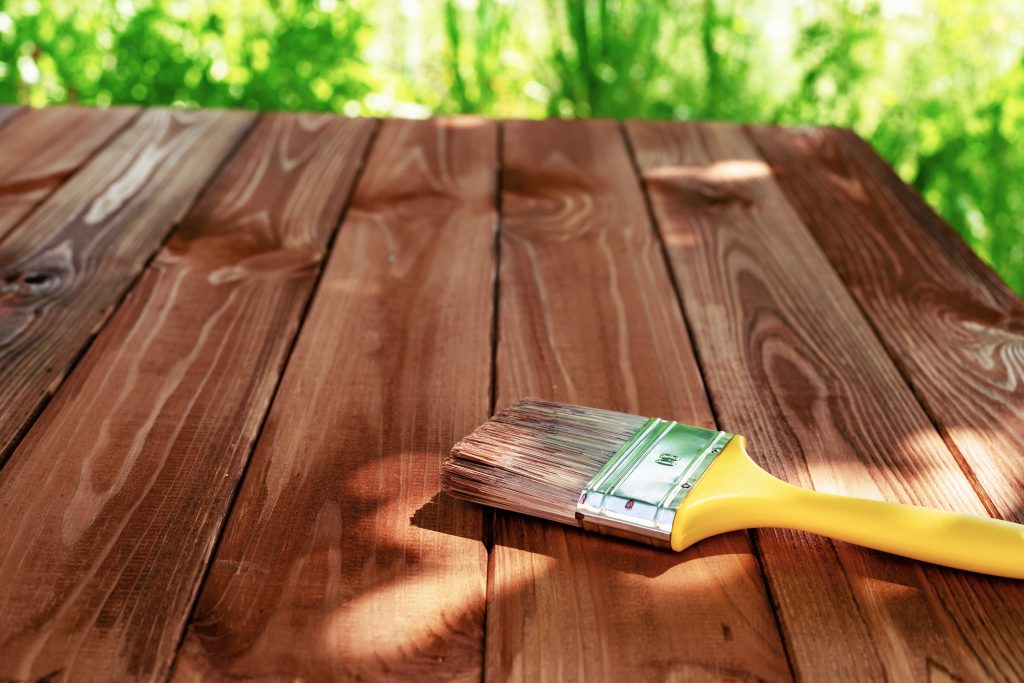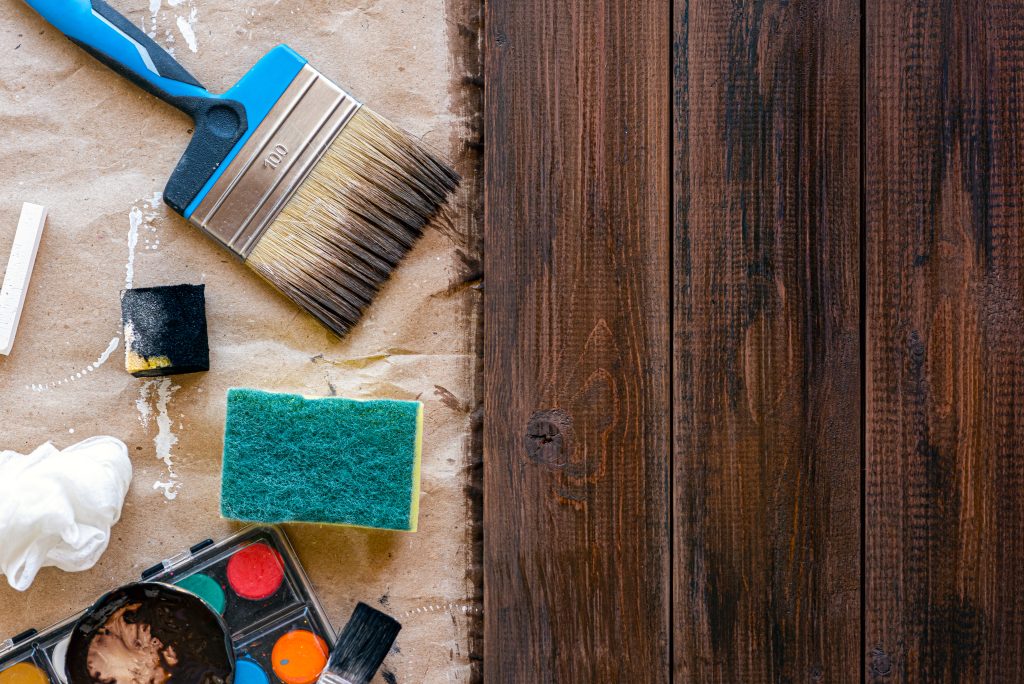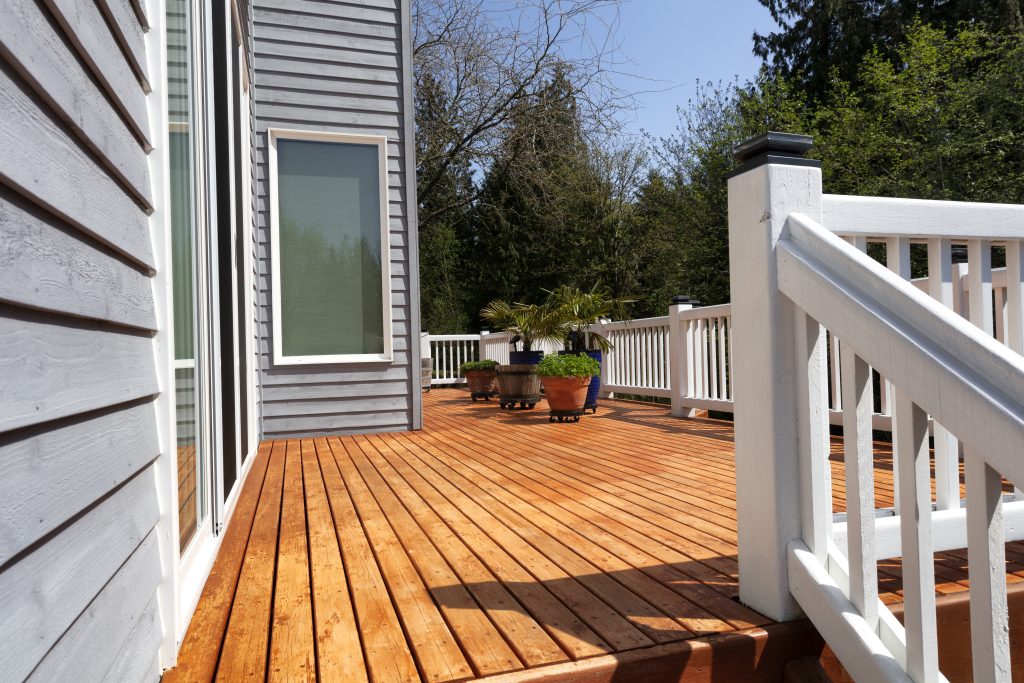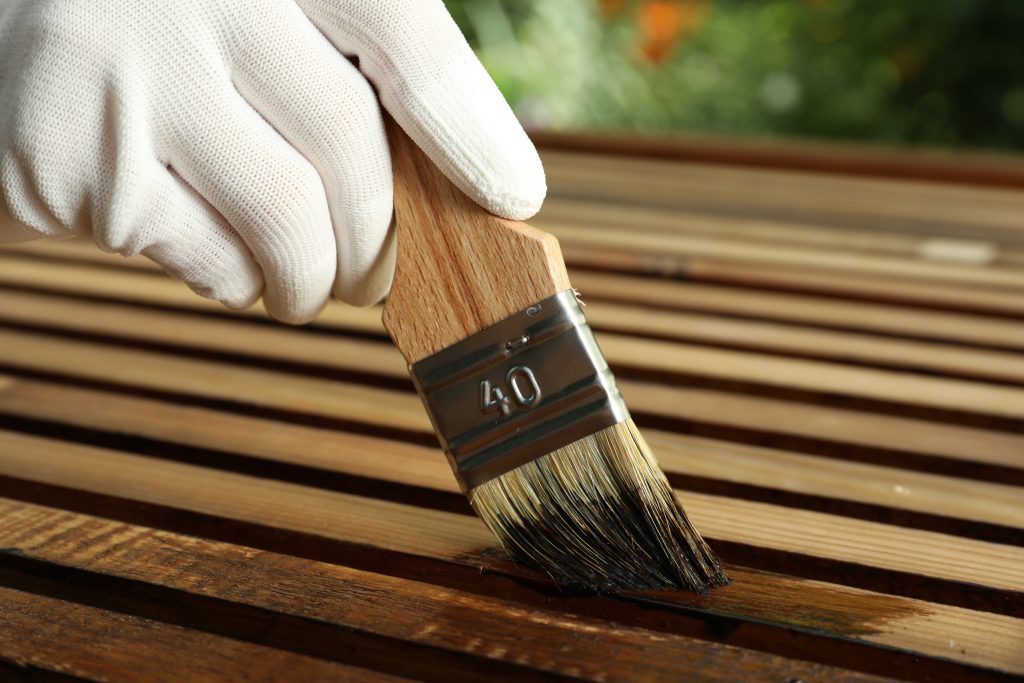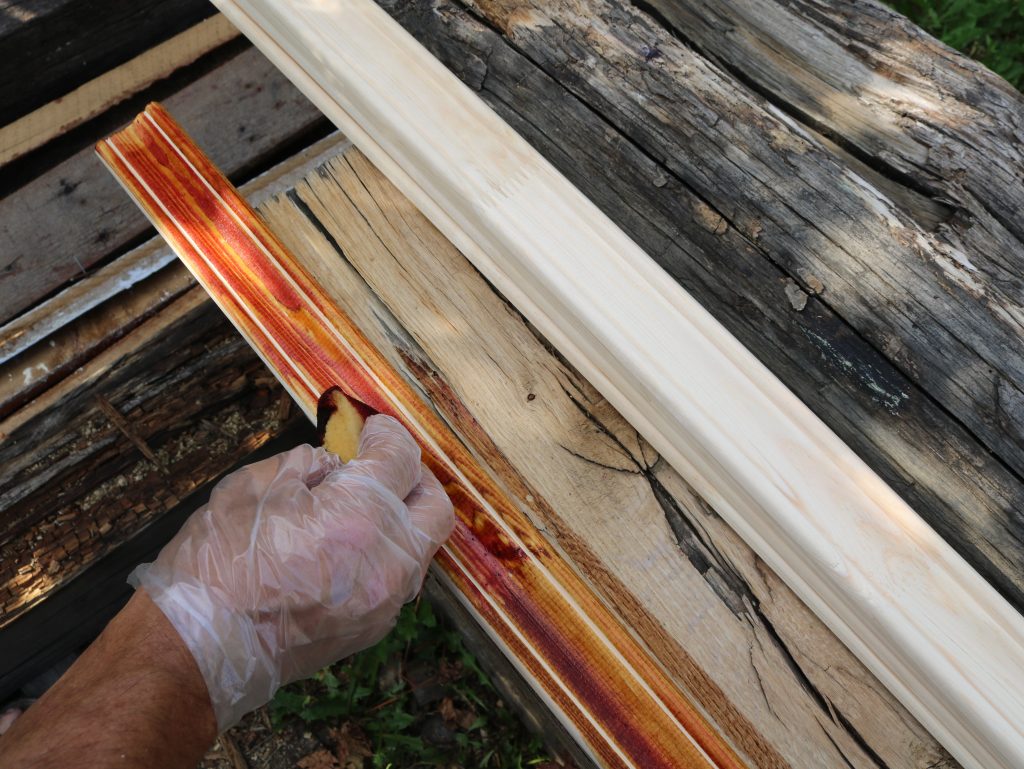How to Choose the Best Wood Stain for Your Project
Wood stains are an excellent way to enhance wood’s natural beauty while protecting it from environmental damage. Choosing the best wood stain can be daunting, but it is essential to get it right to achieve the desired results. This article will provide a comprehensive guide to help you select the best wood stain for your needs.
Understanding the different types of wood stains is crucial in selecting the best one for your project. There are three main types of wood stains: water- oil- and gel-based. Each type of stain has its unique characteristics, advantages, and disadvantages. The type of wood you are staining will also affect the type of stain you should choose. This article will cover everything you need to know to choose the best wood stain for your project, including the different types of stains, how to choose the right color, and how to apply the stain.
Key Takeaways
- Understanding the different types of wood stains is crucial in selecting the best one for your project.
- Choosing the right color is essential in achieving the desired results for your project.
- Proper application and maintenance of the stain can extend its durability.
Key Takeaways
Several key factors must be considered when selecting the best wood stain for a project. Below are some key takeaways to keep in mind:
- Consider the type of wood: Different types of wood absorb stains differently, so choosing a stain compatible with the wood used is important. For example, softwoods like pine and fir absorb stains more unevenly than hardwoods like oak and maple.
- Decide on a color: Wood stains come in a wide range of colors, from light, natural tones to dark, rich hues. It’s important to choose a color that complements the overall design aesthetic of the project.
- Choose a type of stain: There are several types of wood stains available, including oil-based, water-based, and gel stains. Each type has unique properties and advantages, so choosing the one that best fits the project’s needs is important.
- Consider the level of protection needed: Some wood stains offer more protection than others against UV rays, water damage, and general wear and tear. Choosing a stain that offers the protection needed for the project is important.
- Test the stain first: Before applying a wood stain to the entire project, it’s important to test it on a small, inconspicuous area to ensure that the color and finish are as desired.
By keeping these key factors in mind, one can choose the best wood stain for their project, ensuring a beautiful and long-lasting finish.
Understanding Wood Stains
Wood stains are a popular way to enhance wood’s natural beauty while protecting it from the elements. Many wood stains are available, each with unique characteristics and benefits. Understanding the different types of wood stains can help you choose the best one for your project.
Types of Wood Stains
There are two main types of wood stains: transparent and solid. Transparent stains allow the natural beauty of the wood to show through, while solid stains provide more coverage and hide imperfections in the wood.
Within these two categories are several subcategories of wood stains, including semi-transparent, water-based, oil-based, and varnish stains. Semi-transparent stains balance coverage and transparency, while water-based stains are easy to clean up and environmentally friendly. Oil-based stains penetrate the wood deeply, providing long-lasting protection, while varnish stains offer a glossy finish.
Choosing the Right Wood Stain
When choosing a wood stain, it’s important to consider the type of wood you’re working with and the look you’re trying to achieve. For example, water-based stains bring out the color of the wood grain, while oil-based stains penetrate the wood deeper, giving it a deeper color. Woods like pine are prone to blotching and tend to absorb stains unevenly, so that a gel stain may be a better choice.
It’s also important to consider the level of protection you need. Transparent stains provide minimal protection, while solid stains offer the most protection from the elements. A solid stain may be the best choice for staining a deck or other outdoor project.
Understanding the different types of wood stains and their benefits can help you choose the best one for your project. Whether you’re looking for a transparent stain to enhance the natural beauty of your wood or a solid stain to provide maximum protection, there’s a wood stain that’s perfect for your needs.
Types of Wood and Their Stain Compatibility
Not all types of wood are created equal when it comes to staining wood. Some woods are more receptive to stains than others, and some stains work better on certain types of wood. Here are some common types of wood and their stain compatibility:
Softwood
Softwood, such as pine, is a popular choice for woodworking projects. It has a natural grain and texture that can be enhanced with the right stain. Pine is a softwood that is particularly receptive to oil-based stains. However, it can also be stained with water-based stains.
Hardwood
Hardwood, such as mahogany wood, is another popular choice for woodworking projects. It has a tighter grain than softwood and is generally more difficult to stain. However, hardwood is more durable and can withstand wear and tear better than softwood. Oil-based stains are generally recommended for hardwoods, but water-based stains can also be used.
Western Red Cedar
Western red cedar is a type of softwood that is known for its natural beauty and durability. It has a unique reddish-brown color can be enhanced with the right stain. Western red cedar is particularly receptive to oil-based stains, but water-based stains can also be used.
Ipe
Ipe is a type of hardwood known for its durability and resistance to rot and decay. It has a tight, uniform grain that can be difficult to stain. However, ipe can be stained with both oil-based and water-based stains.
Natural Grain
When staining wood, it’s important to consider the natural grain of the wood. Some woods, such as oak and maple, have a more pronounced grain pattern that may show through the stain. Other woods, such as pine, have a more subtle grain pattern that can be enhanced with the right stain.
In summary, the type of wood you choose for your woodworking project will determine the type of stain that will work best. Softwoods are generally more receptive to oil-based stains, while hardwoods require more care and attention. It’s also important to consider the natural grain and texture of the wood when selecting a stain.
Choosing the Right Stain Color
Choosing the right stain color is important in any wood staining project. The color of the stain can dramatically change the appearance of the wood, so it is important to consider the overall aesthetic you are trying to achieve. Here are some tips to help you choose the right stain color for your project:
Consider the Wood Type
Different types of wood absorb stains differently, so it is important to consider the type of wood you are staining when choosing a stain color. For example, pine tends to absorb stains unevenly, while oak absorbs stains more evenly. This can affect the final color of the stain, so it is important to test the stain on a small, inconspicuous area of the wood to ensure that the color is what you want.
Choose a Complementary Color
If you want your wood to stand out, consider choosing a stain color that complements the colors in the surrounding area. For example, if you have a lot of gray or cool-toned decor in the room, consider choosing a warm-toned stain color like golden oak or walnut. If you have a lot of warm-toned decor, consider choosing a cool-toned stain color like cherry or black.
Consider the Undertones
Stain colors can have undertones that affect the final color of the wood. For example, a stain color with red undertones can give the wood a reddish tint, while a stain color with green undertones can give the wood a grayish tint. It is important to consider these undertones when choosing a stain color to ensure that the final color of the wood is what you want.
Test the Stain Color
Before committing to a stain color, testing the stain on a small, inconspicuous wood area is important. This will allow you to see how the stain looks on the wood and ensure that the color is what you want. If you need clarification on the color, consider testing multiple stain colors on different wood areas to see which one looks best.
Choosing the right stain color is important in any wood staining project. Consider the type of wood, choose a complementary color, consider the undertones, and test the stain color before committing to a final color. By following these tips, you can ensure that your wood staining project turns out exactly how you want it to.
Selecting Stains for Different Purposes
When selecting a wood stain, it’s important to consider the project’s purpose. Different types of wood stains are better suited for different purposes, such as outdoor decks or indoor furniture. Here are some tips for selecting the best wood stain for various projects:
Decks and Outdoor Wood
Choosing a wood stain designed for exterior use is important for outdoor projects. Look for a stain that is water-resistant and provides protection against UV rays. Oil-based stains are popular for outdoor projects as they penetrate the wood and provide a deep, rich color. However, water-based stains are also a good option as they are easy to clean up and have a low odor.
Furniture and Interior Wood
When selecting a wood stain for indoor furniture or other interior wood projects, consider the type of wood you are working with. Some woods, such as pine, are prone to blotching and require a pre-stain conditioner to prevent uneven color. Gel stains are a good choice for vertical surfaces, such as cabinets and trim, as they are easy to apply and provide even coverage. For hardwood floors, it’s best to choose a stain that is specifically designed for floors and provides durability and protection against wear and tear.
Kitchen Cabinets
Kitchen cabinets require a durable wood stain that withstands daily wear and tear. Look for a stain specifically designed for cabinets and provides a hard, scratch-resistant finish. Oil-based stains are a good choice for kitchen cabinets as they provide a deep, rich color and are easy to touch up.
Exterior Stain
Exterior wood stains are designed to protect against the elements and provide long-lasting protection for outdoor projects. Look for a stain that is water-resistant and provides protection against UV rays. Semi-transparent stains are a good choice for decks and other outdoor projects as they allow the natural beauty of the wood to show through while protecting the elements.
In summary, selecting the best wood stain for a project depends on the purpose of the project and the type of wood being used. By considering these factors, you can choose a wood stain that provides the best protection and enhances the natural beauty of the wood.
Applying Wood Stains
Remember a few things to ensure a smooth and even finish when applying wood stain. Here are some tips to follow:
- Prepare the surface: Before applying the stain, make sure the surface is clean and smooth. Sand the wood with sandpaper to remove any rough spots or imperfections. Wipe the surface with a tack cloth to remove any dust or debris.
- Choose the right applicator: The most common applicators for wood stains are brushes and rags. A brush is best for larger surfaces, while a rag is better for smaller areas or for applying a lighter coat of stain. Foam brushes are also good for applying stains to tight or hard-to-reach areas.
- Apply the stain evenly: When applying the stain, work in small sections and apply the stain evenly with the grain of the wood. Make sure to wipe off any excess stain with a clean rag to avoid streaks or blotches.
- Allow for proper drying time: After applying the stain, allow it to dry completely before applying a second coat or sealing the wood. The drying time will depend on the type of stain and the humidity in the air, so be sure to check the manufacturer’s instructions.
- Consider using a wood conditioner: If you’re working with soft or porous wood, using a wood conditioner before applying the stain is a good idea. This will help the wood absorb the stain more evenly and prevent blotches or streaks.
- Watch out for moisture: Moisture can affect how the stain adheres to the wood, so make sure the surface is completely dry before applying the stain. Avoid staining on a rainy or humid day if you’re working outside.
Following these tips can achieve a beautiful and professional-looking finish when applying wood stain.
Stain Durability and Maintenance
When selecting a wood stain, it is important to consider its durability and maintenance requirements. A good stain should resist cracking, chipping, and warping. It should also withstand weathering and repel water to prevent scars and scratches.
Oil-based stains are more durable than water-based ones, as they penetrate deeper into the wood and provide better protection against the elements. However, they also require more maintenance and cleanup, as they take longer to dry and can be difficult to remove.
Opaque stains provide the most protection against UV rays and weathering, but they can also hide the natural beauty of the wood. Semi-transparent and transparent stains allow the wood grain to show through but provide less protection against the elements.
To maintain the durability of a wood stain, following the manufacturer’s instructions for cleaning and maintenance is important. Regular cleaning and reapplication of the stain can prevent damage and maintain the color and finish of the wood.
Pressure-treated wood requires a different type of stain than untreated wood, which has been chemically treated to resist rot and decay. Water-repellent stains are recommended for pressure-treated wood, as they help to prevent water damage and keep the wood looking new.
Over time, all wood stains will begin to weather and turn gray. To prevent this, it is important to clean and reapply the stain as needed regularly. This will help to maintain the durability and appearance of the wood and prevent costly repairs in the future.
In summary, when selecting a wood stain, it is important to consider its durability, maintenance requirements, and weathering resistance. Oil-based stains tend to be more durable but require more maintenance and cleanup. Opaque stains provide the most protection but can hide the natural beauty of the wood. Regular cleaning and reapplication of the stain can maintain its durability and appearance over time.
Environmental Considerations
When selecting a wood stain, it is important to consider the product’s environmental impact. One major environmental concern is the level of volatile organic compounds (VOCs) in the stain. VOCs are chemicals that can contribute to air pollution and have negative health effects on humans and the environment.
To minimize the impact of VOCs, choosing a low-VOC or zero-VOC wood stain is recommended. These stains are formulated with fewer harmful chemicals and emit lower levels of VOCs into the air. Some popular low-VOC and zero-VOC wood stain brands include ECOS, AFM Safecoat, and Vermont Natural Coatings.
Another way to reduce the environmental impact of wood stains is to choose a water-based stain instead of an oil-based stain. Water-based stains are typically lower in VOCs and easier to clean with soap and water. They are also less likely to emit harmful fumes during application.
It is also important to consider the source of the wood used in the project. Choosing sustainably sourced wood can reduce the environmental impact of the project overall. Look for wood certified by organizations such as the Forest Stewardship Council (FSC) or the Sustainable Forestry Initiative (SFI).
By considering the environmental impact of the wood stain and the wood itself, you can make a more sustainable choice for your project.
Product Recommendations
When selecting the best wood stain, many options are available. However, some brands and products stand out due to their quality, durability, and performance. This section will provide product recommendations based on wood stain ratings, customer reviews, and expert opinions.
Varathane
Varathane is a popular brand that offers a wide range of wood stains, including oil-based, water-based, and gel stains. Their products are known for their excellent coverage, fast drying time, and long-lasting finish. Varathane stains are also easy to apply and can be used on various surfaces, such as hardwood floors, furniture, and cabinets.
One of the best Varathane products is the Varathane Ultimate Wood Stain, a premium, high-performance stain that provides rich, deep color and superior coverage. It is available in 28 colors and can be used on interior and exterior surfaces. Another popular Varathane product is the Varathane Premium Fast Dry Wood Stain, which dries in one hour and provides a smooth, even finish.
Behr
Behr is another leading brand in the wood stain market, offering a wide range of products for different applications and surfaces. Their stains are known for their durability, weather, and fade resistance. Behr also offers a color-matching service, allowing customers to match their stain color to their existing decor or furniture.
One of the best Behr products is the Behr Premium Solid Color Waterproofing Stain & Sealer, a 100% acrylic formula that protects against water, mildew, and UV rays. It is available in over 1,600 custom colors and can be used on wood, concrete, and masonry surfaces. Another popular Behr product is the Behr Semi-Transparent Waterproofing Wood Stain, which provides a natural, semi-transparent finish that enhances the wood’s natural beauty.
Home Depot
Home Depot is a popular retailer that offers a wide range of wood stain products from various brands, including Varathane and Behr. They also provide expert advice and guidance on selecting the right stain for your project and tools and accessories for staining and finishing.
When shopping for wood stains at Home Depot, you must check the product ratings and reviews to ensure ==that you are getting a high-quality product that meets your needs. It is also recommended to consult with a Home Depot expert or professional before starting your staining project to ensure that you have the right tools, materials, and techniques.
In conclusion, selecting the best wood stain for your project requires careful consideration of various factors, such as surface type, color preference, durability, and weather resistance. By choosing a high-quality product from a reputable brand, such as Varathane or Behr, and following the proper staining techniques and guidelines, you can achieve a beautiful, long-lasting finish that enhances the natural beauty of your wood surfaces.
Tips for DIY Wood Staining Projects
Staining wood is a great way to enhance the natural beauty of the wood and give it a new look. If you’re planning to take on a DIY wood staining project, there are a few things to remember to ensure you get the best results possible.
Choose the Right Wood
Before you start staining, choosing the right type of wood for your project is important. Some woods, like pine and birch, are more porous than others, which means they absorb stains differently. If you want a consistent finish, consider using a hardwood like oak or maple.
Prepare the Wood Surface
Preparing the wood surface before staining properly is important for the best results. This includes sanding the wood to remove sawdust or rough spots and wiping it down with a damp cloth to remove any remaining dust.
Test the Stain
Before applying the stain to your entire project, it’s a good idea to test it on a small, inconspicuous area first. This will give you an idea of how the stain will look on your chosen wood and help you make any necessary adjustments.
Apply the Stain
When applying the stain, working in a well-ventilated area and wearing gloves to protect your hands is important. Apply the stain with a brush or cloth, and work toward the grain. Apply the stain evenly and wipe away any excess with a clean cloth.
Finish the Wood
Once the stain has dried, it’s time to finish the wood. This can be done with a clear coat of polyurethane or a wax finish, depending on the desired appearance of the wood. A clear coat of polyurethane will create a durable, protective film over the wood, while a wax finish will give the wood a more natural, matte appearance.
Accentuating the Beauty
When choosing a stain, consider the appearance of the wood and how you want to accentuate its natural beauty. For example, a darker stain may be the best choice if you’re working with a piece of wood with a lot of depth and character. A lighter stain may be more appropriate to create a more modern, decor-friendly look.
Yonkers, N.Y
If you’re in the Yonkers, N.Y., area and looking to take on a wood staining project, plenty of resources are available to help you get started. Local hardware stores and home improvement centers can provide everything you need, from wood stains to sandpaper and brushes.
In summary, you can achieve beautiful results with your DIY wood staining project by choosing the right wood, properly preparing the wood surface, testing the stain, applying it evenly, and finishing it. Keep in mind the appearance of the wood and how you want to accentuate its natural beauty and don’t be afraid to ask for help or advice if you need it.
Wood Stain Buyers Guide
Selecting the right wood stain can be daunting, especially if you need to gain prior knowledge about the types of wood stains available in the market. This section will guide you through the basics of wood stains, their types, and some key factors to consider when selecting the best wood stain.
Types of Wood Stains
There are three main types of wood stains: oil-based, water-based, and gel-based. Each type has unique characteristics and is suitable for different types of wood surfaces.
- Oil-Based Stains: These natural oils and pigments penetrate deep into the wood fibers, providing long-lasting protection against water and UV rays. They are ideal for outdoor use, such as decks, fences, and outdoor furniture.
- Water-Based Stains: These stains are made of water-soluble pigments and resins that provide a clear finish and are easy to clean up. They are ideal for indoor use, such as floors, cabinets, and furniture.
- Gel-Based Stains: These are thicker than oil-based or water-based stains and are ideal for vertical surfaces, such as doors and cabinets. They provide a uniform finish and are easy to apply.
Factors to Consider
When selecting a wood stain, there are several factors to consider, such as the type of wood surface, the level of protection required, and the desired color and finish. Here are some key factors to keep in mind:
- Type of Wood Surface: Different wood surfaces require different types of stains. For example, softwoods like pine and cedar absorb stains differently than hardwoods like oak and maple.
- Level of Protection: If you are staining an outdoor surface, you will need a stain that protects against water and UV rays. You may need a stain that protects against scratches and stains on indoor surfaces.
- Desired Color and Finish: Wood stains come in various colors and finishes, from clear to opaque. Consider the color and finish that best complement your wood surface and achieve the desired look.
- Application Method: Some stains require a specific application method, such as brushing, rolling, or spraying. Consider the application method that is most convenient for you and the size of the wood surface you are staining.
Considering these factors, you can select the best wood stain for your needs and achieve a beautiful, long-lasting finish on your wood surface.
Best Wood Stains List
When selecting the best wood stain, many options are available. To simplify the process, here is a list of some of the best wood stains available based on expert reviews and consumer ratings.
- General Finishes Oil-Based Gel Stain
This top-rated wood stain provides a rich and deep color to the wood. It is easy to apply and provides excellent coverage. The gel formula ensures the stain does not drip or run, making it suitable for vertical surfaces. It is also resistant to fading, cracking, and peeling, making it durable.
2. Minwax Polyshades Stain & Polyurethane
This wood stain is a great option for those who want to save time and effort. The stain contains polyurethane, which provides a protective coating to the wood, eliminating the need for a separate topcoat. It is available in a range of colors and provides excellent coverage. It is also easy to apply and dries quickly.
3. Ready Seal Wood Stain and Sealer
This popular wood stain is known for its durability and ease of use. It is a one-coat application that does not require a primer, saving time and effort. It is also resistant to fading, peeling, and cracking, making it a long-lasting option. It is available in a range of colors and provides excellent coverage.
4. Varathane Premium Fast Dry Wood Stain
This wood stain is a great option for those who want a quick-drying formula. It dries in just one hour, making it a time-saving option. It is available in a range of colors and provides excellent coverage. It is also resistant to fading, peeling, and cracking, making it durable.
5. Olympic Maximum Stain and Sealant
This wood stain is a great option for those who want a stain and sealer in one. It provides excellent coverage and protects the wood from UV rays, water damage, and mildew. It is available in a range of colors and provides a long-lasting finish.
Overall, these are some of the best wood stains available. When selecting a wood stain, it is important to consider factors such as the type of wood, the desired color, and the level of protection required. By selecting the right wood stain, one can enhance the beauty and durability of their wood surfaces.
Conclusion
Selecting the best wood stain for a project can be challenging, but following the steps outlined in this article can make it much easier. The first step is to determine the desired appearance of the wood. A clear sealer may be the best option if a natural appearance is desired. A stain may be necessary if a darker or richer appearance is desired.
It is important to consider the level of protection needed for the wood. If the wood is exposed to UV rays, a stain with UV protection may be necessary. Polyurethane can also be added to provide additional protection against wear and tear.
Gel stains can be a great option for those new to finishing wood, as they are easy to apply and provide a consistent finish. For more experienced people, oil-based stains can provide a deeper color and a more natural appearance.
When selecting a wood stain, it is important to consider the type of wood being used. Some types of wood absorb stains differently, affecting the wood’s final appearance.
In conclusion, selecting the best wood stain for a project requires careful consideration of the desired appearance, level of protection needed, and type of wood used. Following the steps outlined in this article, anyone can achieve a beautiful and long-lasting finish on their wood projects.
Frequently Asked Questions
How can I identify the right wood stain color for my project?
Choosing the right wood stain color can be a daunting task. It is important to consider the overall aesthetic of your space and the mood you want to create. To help you identify the right wood stain color for your project, identify the wood species you are working with. This will help you determine which stain colors will work best with the natural color and grain of the wood. Before applying it to the entire surface, you can also test the stain on a hidden area to see how it will look on the wood.
What factors should I consider when choosing a wood stain?
When choosing a wood stain, you must consider the type of wood you are working with, the desired color and finish, and the level of protection you need. Some stains are designed for specific types of wood, while others are more versatile. Consider the durability and protection you need and the maintenance required to keep the stain looking its best.
Is it important to match the wood stain to the floor?
Matching the wood stain to the floor can help create a cohesive and harmonious look in your space. However, matching the wood stain to the floor is only sometimes necessary. In some cases, contrasting stains can create a unique and interesting look. When choosing a wood stain, it is important to consider the overall aesthetic of your space and the mood you want to create.
What are the best stain combinations for different types of wood?
The best stain combinations for different types of wood will depend on the natural color and grain of the wood. Some woods, such as oak and pine, are more versatile and can work well with various stain colors. Other woods, such as cherry and walnut, have a more distinct natural color and may require a specific type of stain to achieve the desired look.
Should I use an oil-based or water-based stain?
Both oil-based and water-based stains have their advantages and disadvantages. Oil-based stains are more durable and provide a deeper, richer color. However, they can be more difficult to clean up and may emit strong fumes. Water-based stains are easier to clean and have a lower odor but may not provide as deep color.
Are there any wood stain matching kits available on the market?
Yes, there are wood stain matching kits available on the market. These kits typically include a variety of stain colors and tools to help you identify the right color for your project. However, it is important to note that these kits may provide a different match and require some experimentation to achieve the desired color.
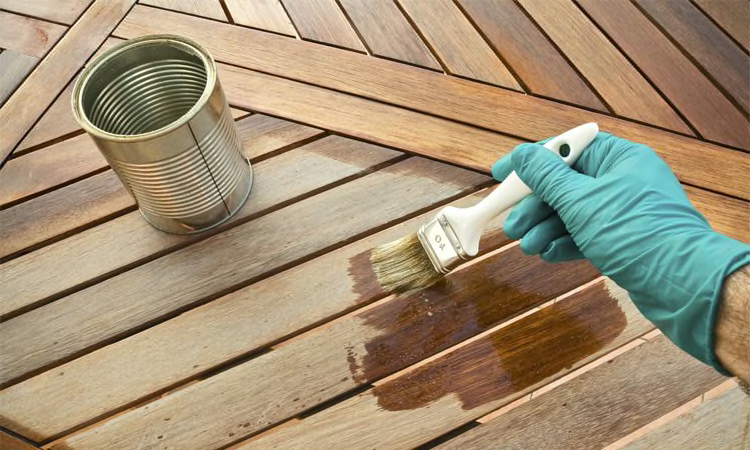
Wood Stain Ratings
Source: Consumer Reports

